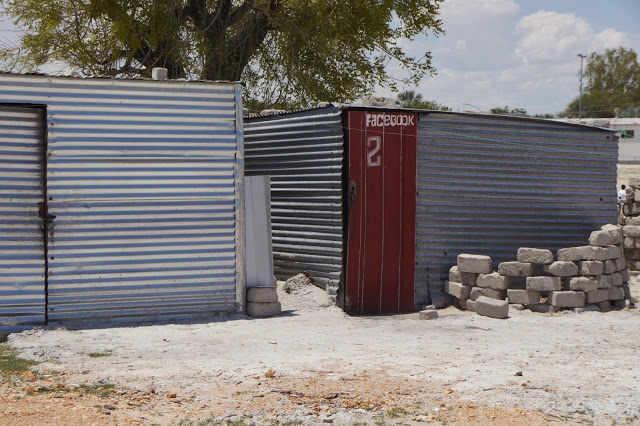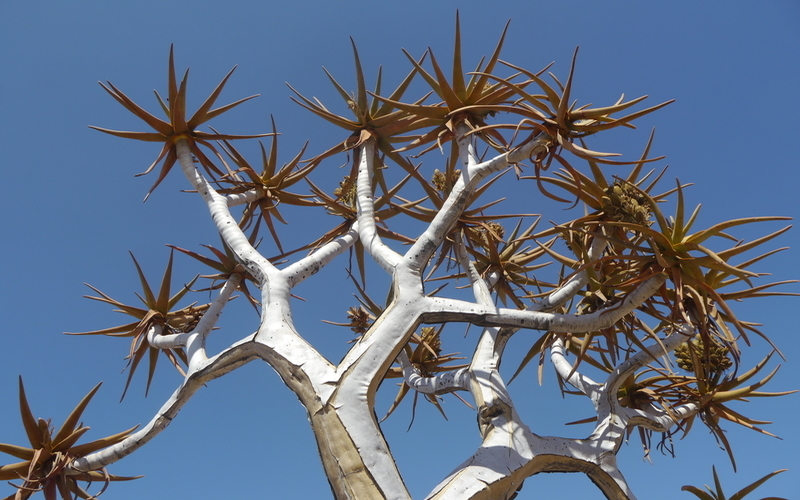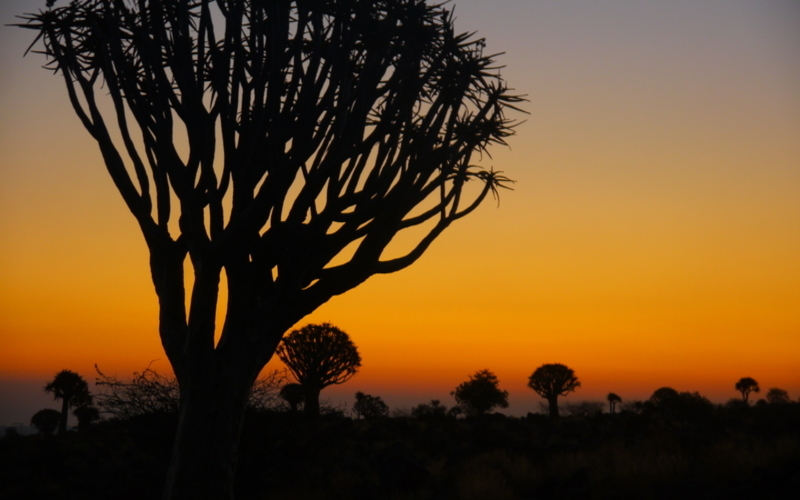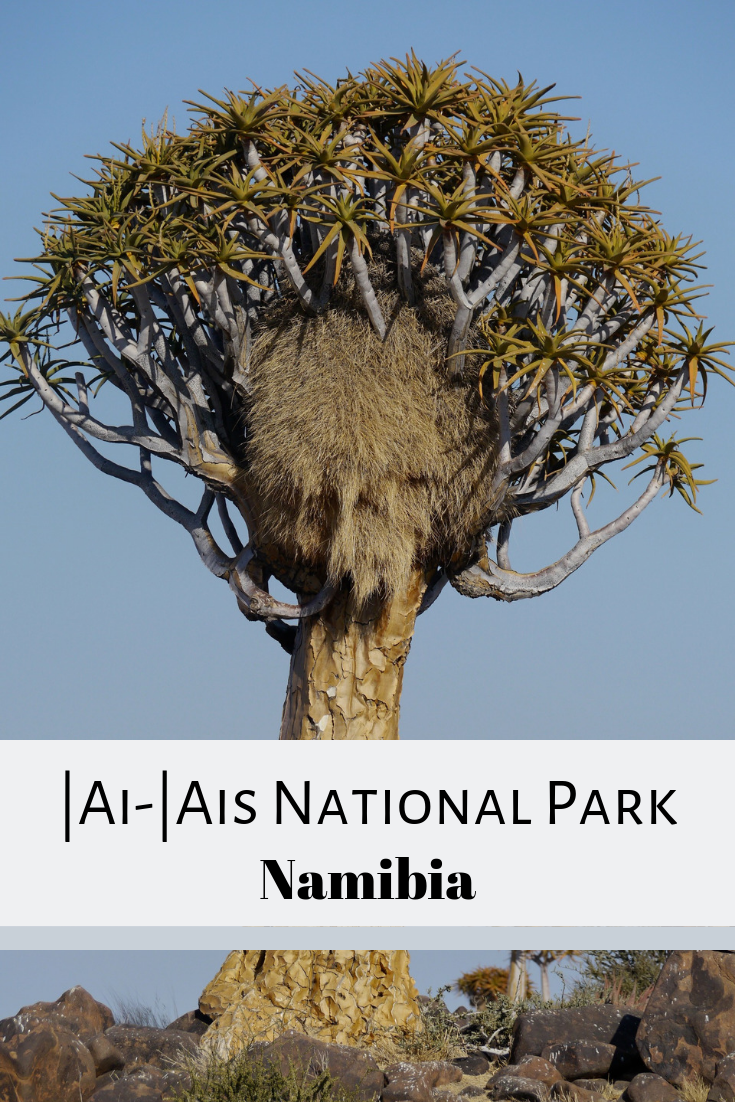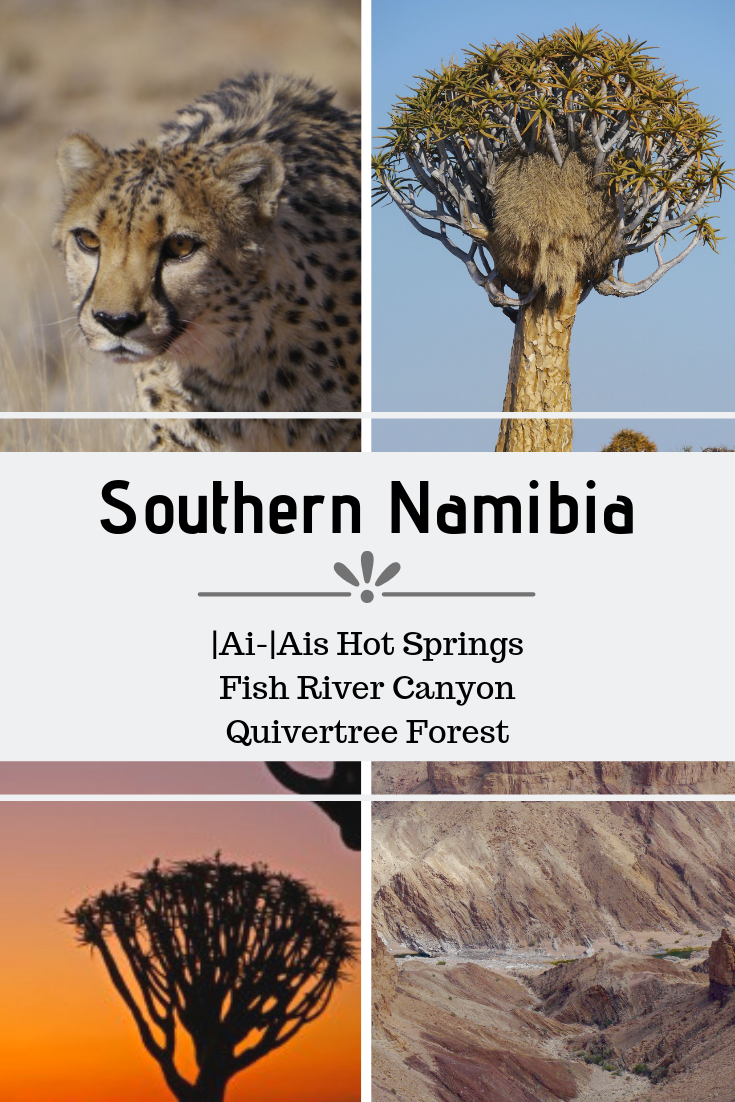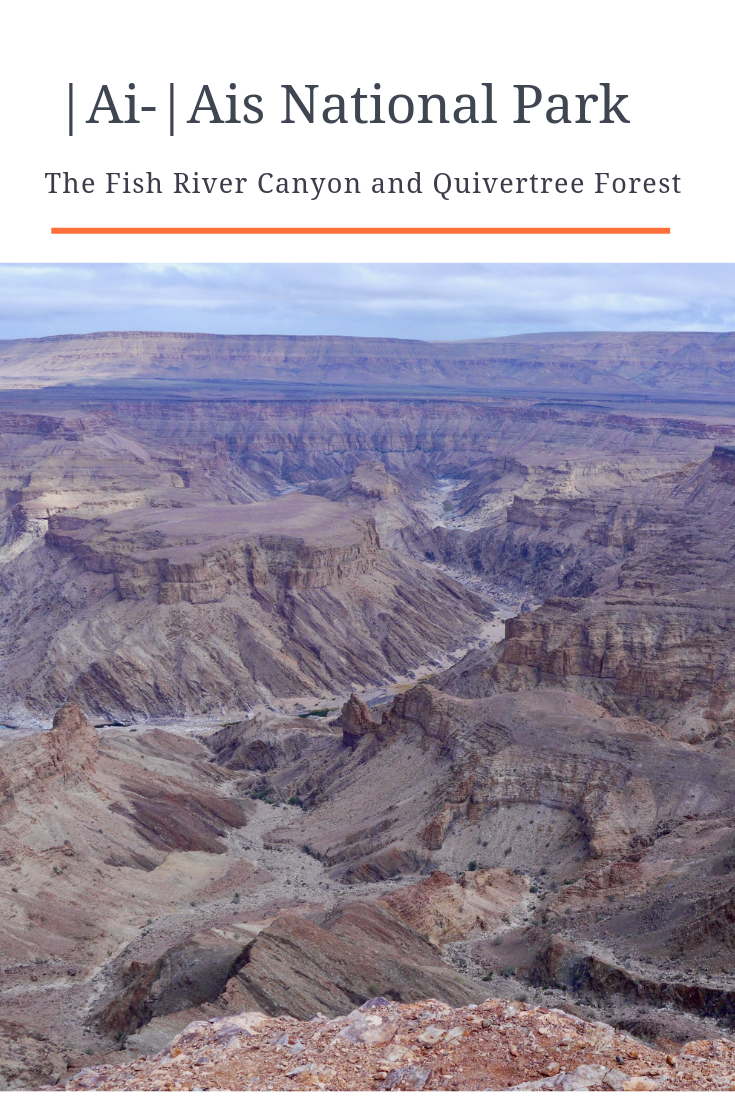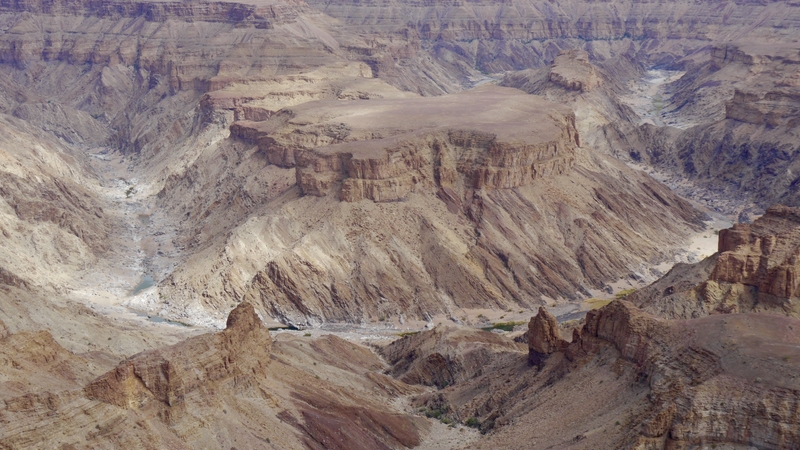
Visiting |Ai-|Ais National Park in Southern Namibia
In the indigenous Nama Language, the word Namibia means “land of nothing.” The vast country in southwestern Africa received its name because of its seemingly infinite landscapes that extend toward the sky, as far as the eye can see. Yet, amidst this nothingness, in the heart of southern Namibia’s sprawling |Ai-|Ais National Park, lie some of Africa’s most impressive natural wonders.
The otherworldly landscapes of |Ai-|Ais—part of the greater |Ai-|Ais-Richtersveld Transfrontier Park—showcase the grandeur of Namibia’s geologic features. Highlights of the area include the Quivertree Forest, the Giant’s Playground and, most notably, the extraordinary Fish River Canyon.
After an unforgettable experience amid the blood-red dunes of the Namib desert, our Namibia itinerary brought us southward, toward the Fish River Canyon in the |Ai-|Ais Transfrontier National Park.
Along the way, we passed some of Namibia’s most colorful desertscapes—marveling at the pastel hues of the windswept dunes, the fields of rippling golden grasses and the jagged purple mountains mountains in the distance.
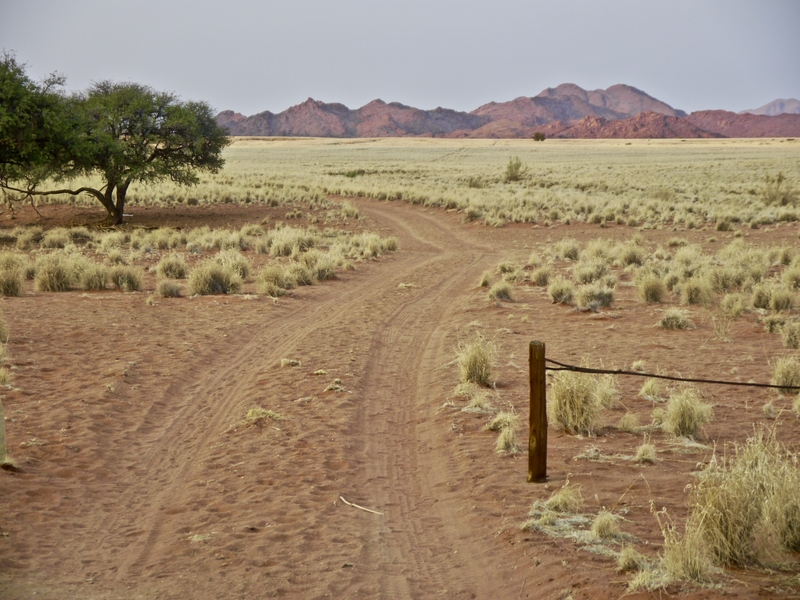
In our compact car, we braved the isolated dirt roads that crisscross Namibia’s scorched terrain. A few hours and a flat tire later, we rejoiced as the wheels of our little car finally kissed the pavement.
From there, it was smooth sailing all the way to Keetmanshoop.
The |Ai-|Ais Hot Springs and Fish River Canyon
The |Ai-|Ais Richtersveld Transfrontier Park is a transnational peace park that straddles the border of Namibia and South Africa. Formed in 2003 by conjoining Namibia’s Ai-Ais Game Park and South Africa’s Richtersveld National Park, the large swathe of land in southwestern Africa is home to some of the continent’s wildest scenery.
-
Fish River Canyon
After nearly two weeks visiting many of the country’s primary attractions, we headed southward for the last leg of our journey, toward the chiseled Fish River Canyon in |Ai-|Ais National Park. Over millions of years, Southern Africa’s Fish River has cut through the surface of a rocky and rugged plateau, forming a geological masterpiece second only to Arizona’s Grand Canyon.

We visited the canyon in the dry season, when the river was little more than a few stagnant pools at the canyon’s base. It was difficult to imagine the canyon–550 meters deep and 27 km wide in some places–could have been crafted by such a seemingly small and insignificant river. Yet, apparently, in the height of the rainy season, the canyon is prone to severe flooding, which prompted the National Park Service to forbid hiking without valid permits.
Tourists who opt out of the five day hike through the canyon, are relegated to marveling at the splendid views from the lip of the ravine. Though it would have been wonderful to descend into the canyon for a short day hike, we contented ourselves with a short walk to different viewpoints along the canyon’s edge.
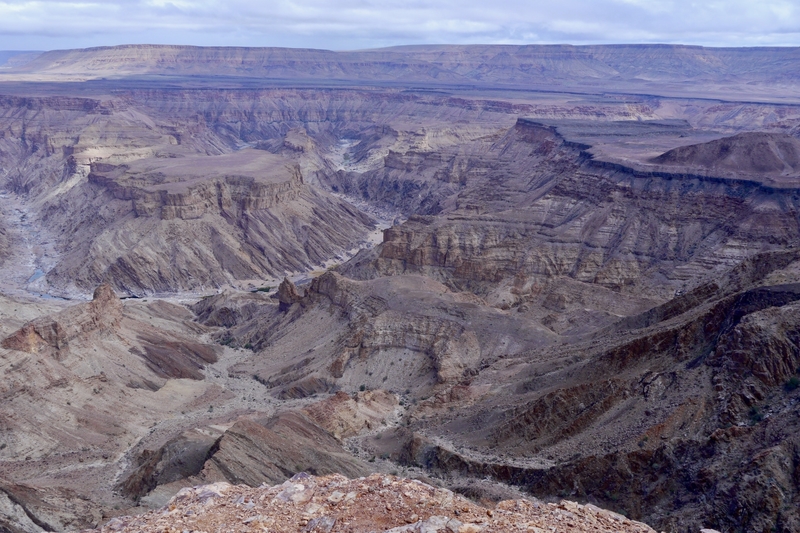
From the moment we peered down at the canyon, we knew the long drive was worth it. Despite visiting on an overcast day when the clouds blocked the sun’s rays from painting the canyon walls with color, the view was magnificent.
-
|Ai-|Ais Hot Springs
That night, we decided to venture to the |Ai-|Ais Hot Springs nestled at the southern end of the Fish River Canyon.
At the |Ai-|Ais Hot Springs, we crossed paths with some of my friends from WorldTeach and spent an evening enjoying a wonderful dinner of oryx steak, relaxing in the spring’s therapeutic waters and recounting adventures from our respective term holidays.
An evening at the hot springs was just what our bodies craved after two weeks of camping and driving along endless, bumpy roads in the unrelenting heat.
And it was just what my mind needed before returning to village life and beginning another hectic term of teaching.
The Quivertree Forest National Monument
The Quivertree Forest National Monument lies northeast of Keetmanshoop, on the privately-owned Gariganus Farm. Though it does not fall within the borders of the |Ai-|Ais Richtersveld Park, the forest is a must-see highlight of Southern Namibia and only a slight detour from the Fish River Canyon.
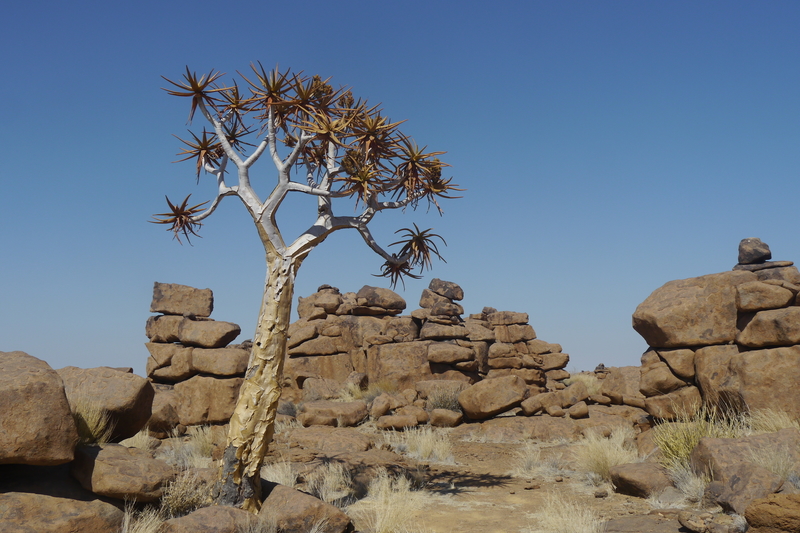
The Quivertree Forest is a privately owned national monument that contains two unique places of interest for tourists–the world’s largest collection of quivertrees and the bizarre geological landscape known as the Giant’s Playground.
-
Quivertree Forest
A quivertree is a type of aloe plant that is known for its ability to survive in one of the world’s most unforgiving environments. The Quiver Tree takes its name from the Kokerboom—an Afrikaans name for the practice of hollowing out the tubular branches to make quivers for arrows
The San population of Namibia allegedly used the branches of the trees as quivers while hunting.
The trees are ubiquitous to the landscape of Southern Namibia, but they are rarely seen in large concentrations like those found in the Quivertree Forest.
We spent a bit of time hiking around the cluster of trees as the sun illuminated the sky with fiery colors. The black silhouettes of the trees in the foreground painted a majestic picture.
-
The Giant’s Playground
The Giant’s Playground is a name given to the unique geological environment near the Quivertree Forest. We agreed immediately that the name could not have been more fitting.
All around, piles of boulders balanced precariously and towered over our heads. It looked as though the whole area formed part of a giant castle made of building blocks.
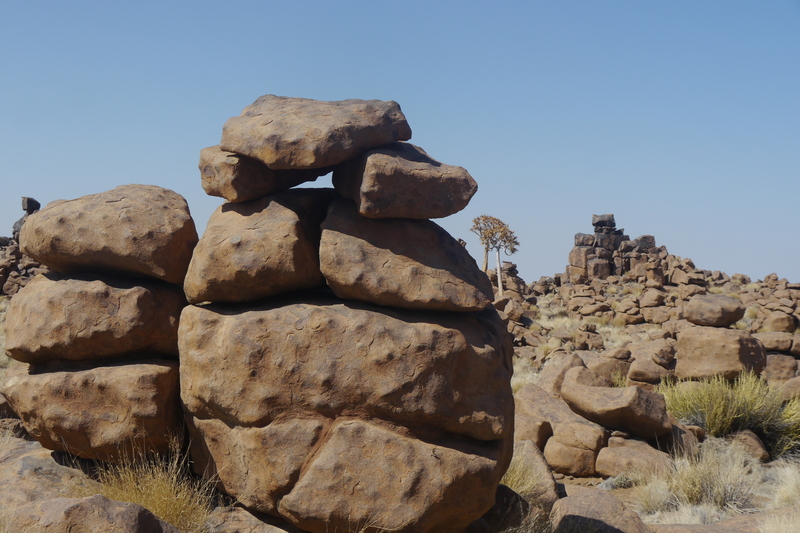
The groupings of boulders were formed millions of years ago when hot magma built up just below the earth’s surface. Over time, the top layer of the earth’s surface eroded and left the dolerite rocks exposed to the elements.
-
Cheetah Conservation
In addition to housing two of the most impressive tourist attractions in southern Namibia, the Gariganus Farm houses wild cheetahs that have been rescued from the surrounding bush. It is common for farmers in Namibia to take part in the effort of preserving Namibia’s dwindling cheetah population. While Namibia contains the world’s largest population of cheetahs in the wild, the animals are constantly under threat due to hunting. These big cats are often killed for fear that they will eat livestock. As a result, farmers around the country have sought to take the preservation of the world’s fastest animals into their own hands.
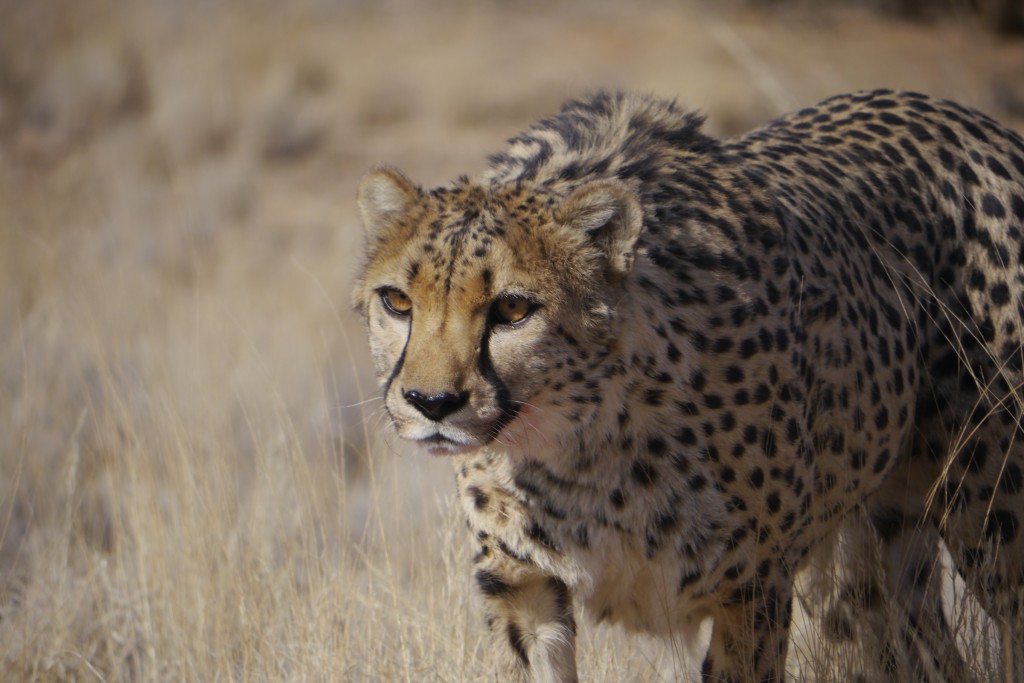
Unlike a zoo, the cheetah enclosure at the Gariganus Farm provides the animals with plenty of space to run. In fact, the area is so big that I had spent some of the evening and early morning attempting to spot the animals to no avail.
Guests of the Gariganus Farm are privy to watching the cheetah feedings that take place in the afternoons. When we attended a feeding, I was expecting to watch the animals eat from behind the safety of the chain-link fence. Instead, we walked inside the pen and stood in silence as two beautiful cats emerged from the brush, driven by the scent of meat.
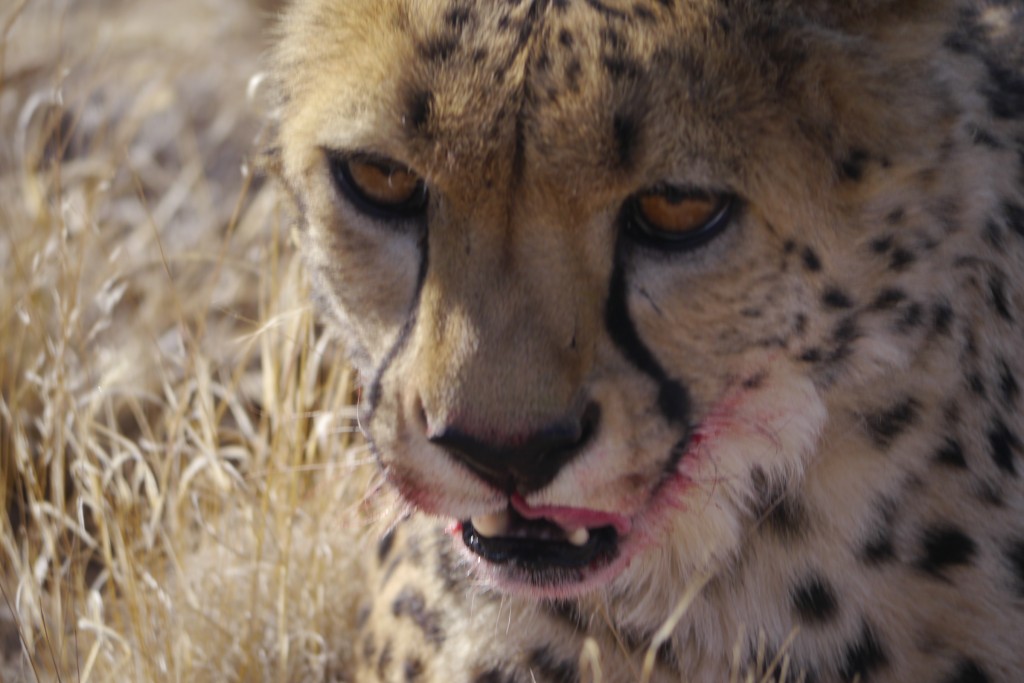
I feel fortunate to have been able to stand so close to these beautiful animals and to watch them interact with my own eyes. While it did not give me the same sensation as spotting them in the wild, our encounter with the animals was thrilling nonetheless.
Standing fully exposed, merely a few feet away from the cheetahs as they gnawed on fresh meat, was an adrenaline-pumping experience to say the least.
****
Namibia is breathtaking destination, defined by its lonely roads and wide open landscapes.
Yes, the country is barren. Yes, it sometimes seems as though nothing can survive in such a harsh and unforgiving place. But, I am reluctant to say that the country is empty. It’s name might allude to a “land of nothing” but we found Namibia to be a land of full of many surprises–the Himba settlements in the middle of the desolate and water-deprived Kaokaveld, the red rock landscapes of Damaraland, the thrilling wildlife sightings at Etosha, the much-needed spring of warm water in the middle of the vast and arid plateau, or the unexpected snow flurry that baffled us on our drive back to Windhoek.
This thrill; this adventure; this presence of the unknown, is precisely what makes Namibia such a unique and exciting place to explore.
____
Did you find this blog post useful? Pin it!
